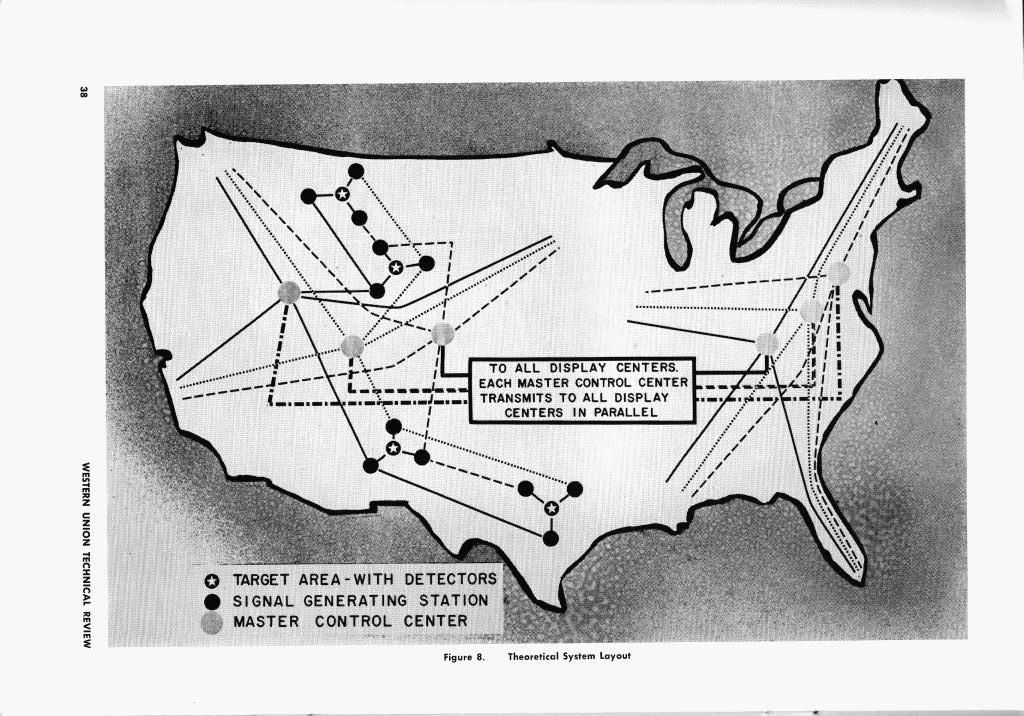Bomb Alarm Network
Atomic Bomb Alarm
In the sixties a nationwide "Bomb Alarm Display System," was designed to send warning signals to military command centers to confirm that an attack had occurred. The system was operational from 1961-1967 and utilized optical sensors like the one pictured on the home page to detect the distinctive double flash of a nuclear detonation. Approximately 100 military sites and US population centers had sensors mounted on buildings or telephone poles and placed several miles apart. If a nuclear blast occurred, the unit would send a warning to a control center before the sensor was destroyed.

In the 1960's, the US Air Force needed a sure way to know quickly whether Soviet bombers or missiles had struck American cities and bases with nuclear weapons. This small device, part of a nationwide "Bomb Alarm Display Network," was designed to send warning signals to military command centers to confirm an attack had occurred.
The Bomb Alarm Display System, operational from 1961-1967, was designed to confirm whether nuclear weapons had detonated in the mainland US or at missile early warning radar sites in Alaska, Greenland, and the United Kingdom. Knowing whether a nuclear attack had actually happened would help leaders decide how to response, and would help avoid launching missiles by mistake. The bomb alarm network, made by the Western Union Telegraph Company, monitored about 100 military sites and US population centers using sensors like the one above. As Strategic Air Command, the North American Air Defense Command, the Pentagon, and other military headquarters, large electronic maps displayed the whole network.
Sensors were mounted on building or telephone pules and placed several miles apart around cities and bases. If a nuclear blast occurred, the unit would send a warning signal to a control center before the sensor was destroyed. The bomb alarm was not sensitive to lightning, sunlight or electrical surges. Photocells inside the glass lens reacted only to the flash of a nuclear explosion.
Western Union designed the Bomb Alarm Display system beginning in 1959 and in 1962 the network was complete. One drawback was that it responded only after an attack-it did not give advance warning. Another drawback was that it relied on commercial telephone lines, which could be damaged in an attack. Though the bomb system made military decision making more reliable, better communication systems and satellites made the network unnecessary in the late 1960's.
Patent for an Atomic Bomb Sensor/Alarm System
http://coldwar-c4i.net/BombAlarm/Patent/us003147380-001.html













